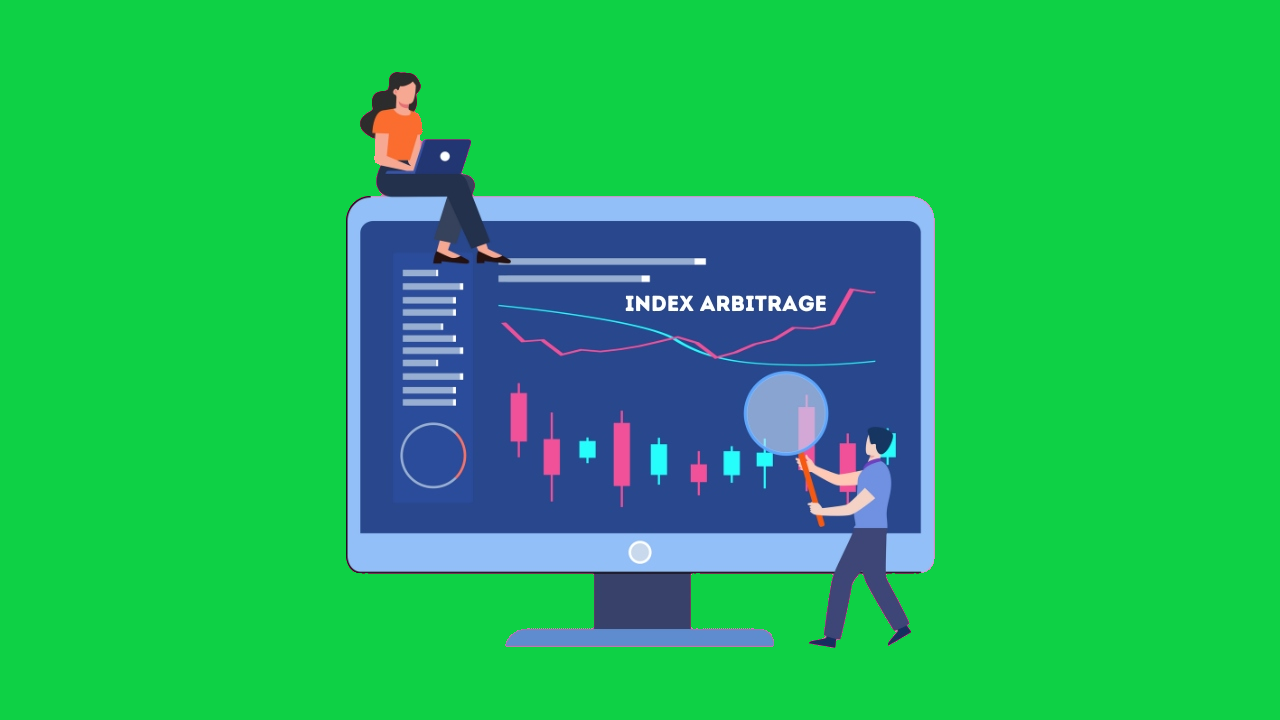If you’re seeking a trading technique with minimal margin call (MC) risk but significant profit potential, there’s a strategy worth considering: Index Arbitrage with a hedging strategy between cash and futures indexes. This technique may sound complicated, but don’t worry! In this article, we’ll break it down into simple terms so that anyone—from beginners to experienced traders—can understand and use this approach effectively.
What is Trading Arbitrage?
Trading is the act of buying and selling in the financial markets with the goal of making a profit. Arbitrage, on the other hand, is a technique that takes advantage of price discrepancies. In index trading, arbitrage involves purchasing an index on one market (usually the cash market) and selling it on the futures market. This price difference creates an opportunity for traders to make a profit.
Arbitrage is essentially a strategy that “hunts” for price differences between two instruments that are supposed to have the same or nearly identical value. In simpler terms, when there is a price difference between cash and futures indexes, a trader buys from the cheaper market and sells in the more expensive market, aiming for a profit when the two prices realign.

Hedging with Cash and Futures Indexes
A hedging strategy is a protective measure against potential losses. In the context of index arbitrage, hedging involves opening offsetting positions in both the cash and futures indexes. This approach creates locked positions that protect against market price fluctuations. In other words, the trader buys the cash index and sells the futures index, creating a locked position that reduces risk from sudden price movements.
The primary advantage of this technique is the minimal loss risk due to the locked position (hedging). Even if the price moves in the opposite direction in one market, the hedged position protects against significant losses.
Benefits of This Trading Technique
Using an index arbitrage trading technique with a hedging strategy between cash and futures indexes offers several appealing benefits, especially for traders of all levels, including beginners.
- Very Low Risk of Loss
With locked positions created through hedging, the risk of loss is minimized. Hedging protects against sudden price fluctuations that could lead to a margin call. Even if the price in the cash or futures market moves significantly away from the initial position, the profit is retained when the prices align again. - Potential for Additional Dividends
Interestingly, this technique also allows traders to earn dividends from the cash index holdings, even though the position is locked with futures. This dividend becomes an extra advantage that can be enjoyed without needing to release the existing arbitrage position. - Accessible for All Trader Levels
This technique is suitable for all levels, from beginners to seasoned traders. Even those just starting with a small initial capital can try this method because it only requires executing simple trades in two different markets, as long as the broker supports both cash and futures index trading.
Read: The Mindset Required to Always Win in Trading
The Only Broker Supporting This Technique: TDS Community with XM
This index arbitrage technique is complex and not all brokers support the facilities needed to perform this type of strategy. However, TDS Community’s affiliate broker, XM, provides full support for traders who want to explore this technique. Through their platform, you can copy trade the strategies of professional traders with experience in index arbitrage. This is especially helpful for beginners who are unfamiliar with in-depth market analysis.
To get started and follow this strategy with XM through TDS Community, you can join the community through this link: Join TDS Community.
Read: What is Copy Trading and Why TDS CopyTrade is the Best Choice?
How to Get Started?
If you’re interested in trying this index arbitrage technique, here are a few straightforward steps you can follow:
- Register and Join TDS Community
First, ensure you’re registered with TDS Community to access the copy trade facility. This way, you can follow the arbitrage strategies of experienced traders. - Choose a Cash and Futures Index Pair
Make sure you select an index pair with high liquidity and frequent price differences between cash and futures. A commonly used example among traders is the S&P 500 in the cash market paired with the S&P 500 futures market. - Monitor the Price Difference (Spread)
Arbitrage is most effective when there’s a significant price difference or spread between the cash and futures index. You can use an automatic monitor tool provided by the broker to check when is the best time to open positions. - Execute the Hedging Position
When the price difference matches your target, execute the trade by buying in the cheaper market and selling in the more expensive market. By using this strategy, you can minimize risk while still making a profit. - Take Advantage of Dividends
With locked positions, you can still receive dividends from the cash index you hold without worrying about adverse price movements in the futures market. - Close Positions When Prices Realign
Once the prices in the two markets realign, you can close the position and take profits from the price differences captured.
Tips for Beginner Traders
Trading with an index arbitrage technique can be a safe way to get started without the fear of margin calls. However, here are a few extra tips that can help you maximize success:
- Start with Small Capital: If you’re new to trading, it’s a good idea to start with a small capital. This reduces the risk if you make an error in execution.
- Understand Timing: Index arbitrage requires precise timing. Practicing with a demo account can help you learn when is the best time to open and close positions.
- Use Copy Trade: TDS Community’s copy trade feature allows beginners to mirror the strategies of experienced traders, reducing the burden of complex analysis for newcomers.
Conclusion
Index arbitrage with a hedging strategy between cash and futures indexes is a trading approach that is both safe and low-risk for all levels. This technique not only reduces the likelihood of a margin call but also provides the added benefit of dividends on locked positions. With the support of the TDS Community’s affiliate broker, XM, you can learn and apply this technique through copy trading, which simplifies the learning curve.
Remember, trading is an activity that requires knowledge and discipline. By learning techniques like this, you can achieve stable results while reducing risk. So if you’re interested in trying an anti-margin call trading strategy with strong profit potential, consider joining TDS Community to discover a safer and more rewarding trading experience. Happy trading!








